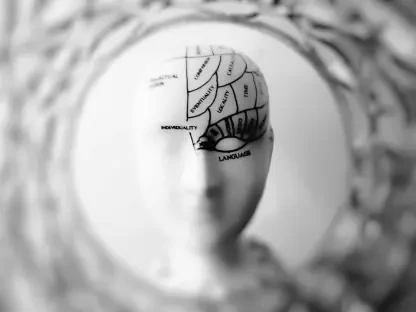Listen to the Article
In 1895, Wilhelm Conrad Röntgen invented the earliest form of an X-ray, and the field of medical imaging was born. Since then, diagnostic imaging has evolved alongside technology, and with artificial intelligence comes new opportunities to detect, prevent, and treat diseases.
Health tech startups and companies are capitalizing on the development in technology, and investing heavily in research and development to improve the accuracy, speed, and scalability of medical imaging. As new diagnostic tools are brought into the market, artificial intelligence is used to enhance the capabilities of technology.
This article takes a closer look at how AI can be deployed at scale to enhance medical imaging and improve millions of lives through early detection.
AI and Machine Learning in Diagnostic Imaging
Artificial intelligence has widespread use cases in healthcare and shows great promise in the medical imaging sector. AI algorithms are developed to improve the accuracy and speed of diagnostics from images. These algorithms are coded to detect abnormalities like fractures, tumors, and other conditions that are difficult to identify with the human eye.
Health-tech companies are already utilizing deep-learning models to read mammograms, CT scans, and MRIs. Reports indicate they’re able to do so in record time and, in many cases, have a higher level of accuracy than radiologists. The industry hopes that in the future, this technology can be used in early cancer detection, disease progression predictions, and more.
AI’s Role in Medical Imaging
Qure.ai is one of the world’s leading AI-driven healthcare companies. They use artificial intelligence to accelerate diagnoses with Qure.ai’s powerful processing capabilities that can scan millions of medical images. Deep learning models are used to interpret chest X-rays, CT scans, and MRIs to diagnose a wide range of diseases such as TB, lung cancer, and strokes.
In healthcare deserts, where specialists are few and far between, this solution is a crucial resource for primary care physicians, who often have to treat many people as quickly as possible. In areas where TB is rife, these tools are also useful for rapid detection and treatment. The Philippines has 7% of the world’s TB cases, and Qure.ai has already reduced the wait time for testing and diagnosis from several weeks to 30 seconds. Their technology has been deployed to over 3,000 sites globally and illustrates the scalability of the model.
Advancing Accuracy and Speed in Diagnostics
Healthcare practitioners should look to AI as a solution capable of doing more than just processing large data sets quickly. The added advantage of using AI is that it improves diagnostic accuracy.
In the case of Qure.ai, studies showed that their algorithms are just as good, and in some cases, better than human radiologists at diagnosing. According to Prashant Warier, the co-founder of Qure.ai, they have seen that “there are studies which show that if you get two radiologists to report on the same chest X-ray, they will only agree 65% of the time. So, 35% of the time they won’t agree on what is there in the X-ray, and that is where the AI is always going to agree. AI is always going to provide the same output for that X-ray. So consistency is super important.”
3D and 4D Imaging Technologies
The world has come a long way since 2D scans. While 3D and 4D imaging scans are a breakthrough in their own way, artificial intelligence enhances these images to improve diagnostic accuracy.
Despite the number of high-tech imaging solutions, patients and physicians still use 3D scans for a number of reasons:
They’re cheaper,
They are non-invasive,
They offer a precise view of a specific area.
However, 3D and 4D scans can be improved by AI. The autonomous nature of AI removes the burden of tedious tasks in diagnostics, like detecting junk, deleting duplicate image sets, and more. This gives practitioners better data to work with and frees up time for more complex tasks.
Physicians can use AI and imaging to diagnose complex conditions, with use cases in orthopedic and cardiovascular diseases. With four-dimensional imaging, real-time movements are captured, providing valuable insights into organ function and development, and AI can be used to detect abnormalities, disease progression and other valuable insights.
Molecular Imaging and Artificial Intelligence
Health tech companies are also exploring the benefits of artificial intelligence in molecular imaging, a breakthrough field that enables doctors to view biological processes at the cellular level. For hospitals and clinics specializing in oncology treatments, this provides physicians with the ability to detect cancer at the earliest stages, and long before it is visible on traditional scans.
Portable and Point-of-Care Imaging Devices
A key breakthrough in medical imaging technology is the development of portable and point-of-care devices. This allows physicians to derive diagnostic results immediately when administering care outside of a traditional clinical setting. These tools are widely used in emergency rooms, in-home care practices, and outpatient clinics.
Artificial intelligence is a key enabling factor in these devices, and deep-learning models are responsible for providing real-time diagnostics.
Conclusion
As the landscape of diagnostic imaging continues to evolve, the integration of AI, machine learning, and advanced imaging technologies is revolutionizing patient care. These innovations are enhancing the speed, accuracy, and consistency of diagnoses while making personalized treatment more achievable. AI’s ability to interpret medical images with remarkable precision is addressing critical challenges, such as limited access to radiologists and long wait times for diagnoses—especially in underserved regions. Meanwhile, technologies like 3D and 4D imaging, molecular imaging, and portable devices are expanding the possibilities for real-time, on-the-spot care.
The future of diagnostic imaging lies in the seamless collaboration between human expertise and machine efficiency. As these technologies mature and become more widely adopted, they will help reduce costs, streamline workflows, and improve patient outcomes across the globe. For healthcare providers, investing in these advanced diagnostic tools will not only enhance clinical capabilities but also strengthen their commitment to delivering high-quality, accessible care. In this era of rapid innovation, embracing these breakthroughs is not just an opportunity—it’s a necessity for shaping the future of healthcare.









